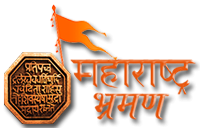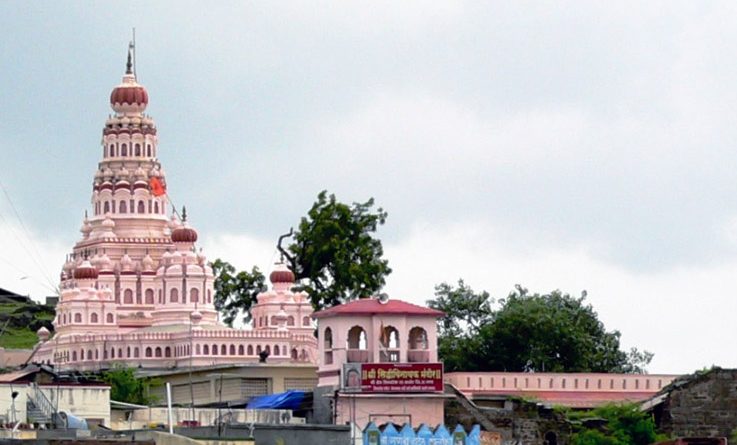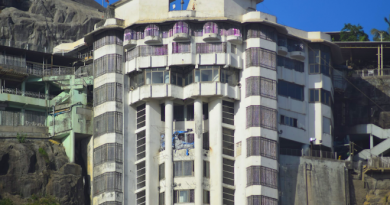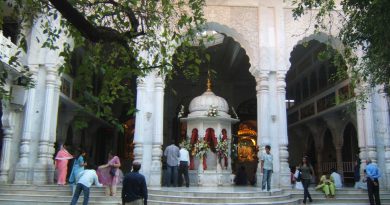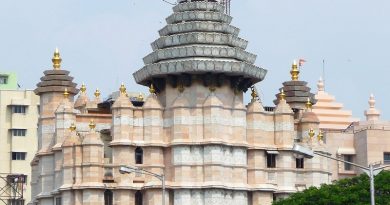Siddhivinayak Temple, Siddhatek
The Siddhivinayak Temple of Siddhatek is a Hindu temple dedicated to Ganesha, the elephant-headed god of wisdom. The temple is one of the Ashtavinayaka, the eight revered shrines of Ganesha in the Indian state of Maharashtra and the only Ashtavinayaka shrine in Ahmednagar district.
Location:
The temple is located on the northern bank of the river Bhima in Siddhatek in the Karjat taluka of Ahmednagar district. The nearest station is Daund (19 km). The temple is accessible from the small village of Shirapur in Pune district, on the southern bank of the river, from where it can be reached by boat or newly constructed bridge. Other routes are (48 km) Daund-Kasti-Padgaon, Shirur-Shrigonda-Siddhatek, Karjat-Rashin-Siddhatek.
The temple stands on a hillock, surrounded by thick foliage of Babul trees and is located approximately 1 km from the core Siddhatek village. To propitiate the deity, devotees often perform pradakshina (Circumambulation) of the hillock seven times, even though the there is no paved road and the path passes through thorny shrubs.
Religious importance:
Though Theur is prescribed to the second temple to be visited in the Ashtavinayak circuit after the foremost Morgaon, pilgrims often visit it third after Morgaon and Theur, as it is a more convenient route.
The Ganesha icon here is with his trunk turned to the right. Usually, the trunk of Ganesha is depicted turned to his left. It is believed that the right-trunked Ganesha is very powerful, but difficult to please. This is the only Ashtavinayaka shrine where the deity has his trunk to the right. Traditionally, an icon whose trunk is to the right is named “Siddhi-Vinayaka”, the giver of siddhi (“accomplishment, success”, “supernatural powers”).The temple is thus considered as a jagrut kshetra where the deity is said to highly powerful.
The Mudgala Purana narrates that at the beginning of Creation, the creator-god Brahma emerges from a lotus, that rises the god Vishnu’s navel as Vishnu sleeps in his yoganidra. While Brahma starts creating the universe, two demons Madhu and Kaitabha rise from the dirt in Vishnu’s ear. The demons disturb Brahma’s process of creation, thereby compelling Vishnu to awake. Vishnu battles the battle, but cannot defeat them. He asks the god Shiva the reason for this. Shiva informs Vishnu that he cannot succeed as he had forgotten to invoke Ganesha – the god of beginning and obstacle removal – before the fight. Therefore Vishnu performs penance at Siddhatek, invoking Ganesha with his mantra – “Om Sri Ganeshaya Namah”. Pleased, Ganesha bestows his blessings and various siddhis (“powers”) on Vishnu, returns to his fight and slays the demons. The place where Vishnu acquired siddhis was thereafter known as Siddhatek.
Architecture:
The temple – constructed in black stone – faces north. The temple has sabha-mandapa (assembly hall) of black stone and another sabha-mandapa, which is a later addition. The threshold of the main shrine has a small demonic head sculpture. The temple also has a Nagarkhana.
The garbhagriha (sanctum) is 15 ft high and 10 ft wide. It has the Jaya-Vijaya – the gatekeepers of Vishnu’s abode – brass sculptures flanking the central icon of Siddhivinayaka. It has a dome-shaped stone ceiling. Like all Ashtavinayaka shrines, the central Ganesha image is believed to be svayambhu (self-existent), naturally occurring in the form of an elephant-faced stone.[8] The central icon of Siddhi-Vinayaka is seated cross-legged with his consort Siddhi seated nearby, though often she is hidden with flower garlands and the sindoor paste that covers the image. The icon is sheathed in brass and with its trunk turned to the right. The sanctum also has a Shiva-panchayatana (Shiva surrounded by Ganesha, Vishnu, the Goddess and the Sun-god Surya) and a shrine to goddess Shivai.
How to reach:
As the temple is in Nagar district , you can reach the place either by bus or by train. if you would like to travel by rail you will need to get down Daund or Boibel and from these stations you can take the bus to reach the temple.
